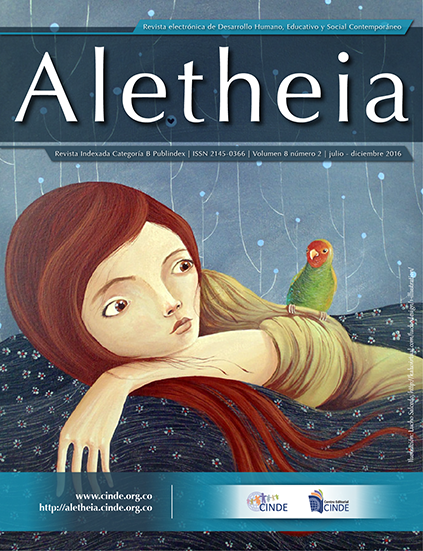VIDEOGAME: A PLAYFUL VIRTUAL STRATEGY IN ENVIRONMENTAL EDUCATION FOR CHILDREN IN PRE-SCHOOL AGE
Main Article Content
Abstract
This project of investigation realized in Bucaramanga's Autonomous University, Group Education and language, line pedagogic practices. There was demonstrated the need to invite the teachers to look for pedagogic alternatives that allow the children of pre-school to come closer the nature to identify the importance of the use of playful strategies orientated to removing the traditional education in the classrooms of class. One tried to design a playful virtual strategy across the use of Technologies of the Information and the Communication (TIC) to favor the education of the environmental education in children in pre-school age of three Bucaramanga's gardens. The used methodology was the investigation action, of qualitative type. The reflection was realized on the pedagogic practice of the teachers of infantile gardens, related to the use of different playful strategies for the education; the review of materials and production of comparative picture of the types of learnings and competitions that are generated by the use of playful virtual strategies; and the efficiency of the strategies decided, with a view to undertaking new analyses and reconstruction of the practices, with the design, application and evaluation of a software as playful virtual strategy.
Downloads
Article Details
Issue
Section

This work is licensed under a Creative Commons Attribution-NonCommercial 4.0 International License.
Authors publishing in this journal agree to the following terms: a. The authors retainthe copyright to the journal and ensure the right to be the first publication of work asLicensed under a Creative Commons Attribution License that allows others toshare the work with an acknowledgment of the authorship of the work and the initial publication in this magazine. b. Authors may establish separate additional agreements to the non-exclusive distribution of the version of the work published inthe journal (for example, place it in an institutional repository or publish it in a book),with an acknowledgment of its initial publication in this journal. c. It allows and encourages authors to disseminate their work electronically (eg, in institutional repositories or on their own website) before and during the submission process,as it can lead to productive exchanges, as well as a subpoena more early andmost of the published (See The Effect of Open Access) (in English).
